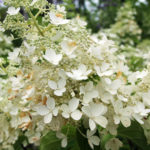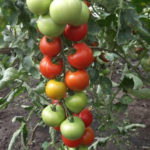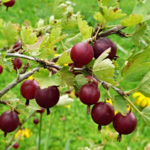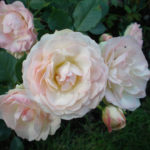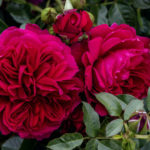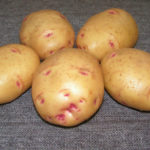Thuja occidentalis Tini Tim
Conifers, which are small, compact in size, are able to give the site a unique charm. Their popularity today is also explained by the fact that such evergreens are organically combined with all sorts of decorative flowering perennials, and besides, they do not take up much space. See for yourself - plant a variety of thuja Tini tim (Thuja occidentalis Tiny tim).
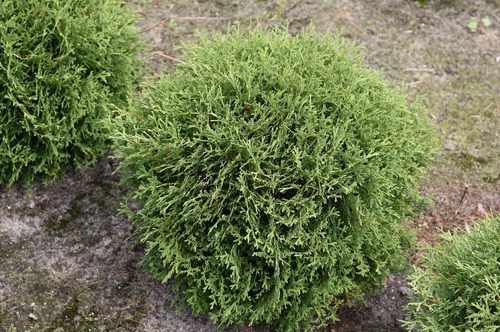
History of creation and description of the variety
The dwarf coniferous plant was bred in the middle of the last century, more specifically in 1955. This is a beautiful shrub, the crown of which has a spherical shape and is 1 to 1.5 meters in diameter. The height of an adult culture varies from 50 to 100 cm. At 10 years old, the parameters of an evergreen plant are as follows: height - 0.3 meters, width - 0.4 meters. Thus, the size of the thuja can be called compact.
This ephedra is slow growing. Its dense crown is formed by densely spaced, thinly branched short shoots covered with scaly needles with a pronounced shine. During the growing season, the needles are painted in a dark green color, with the onset of winter it becomes even more saturated, but it can also acquire a bronze tint. The branches of the Tini Tim variety are covered with a grayish or reddish-brown bark, which tends to flake off. During the fruiting period, the culture acquires a small number of small elliptical or ovoid cones, which, as they ripen, turn from bright green to brown.
Additional characteristics of the plant:
- excellent shade tolerance;
- high winter hardiness (thuja shoots are not damaged by frosts down to -40 ° C);
- negative reaction to sudden changes in air temperatures;
- drying from frost;
- susceptibility to winter and spring sunburn;
- average resistance to harmful insects and diseases.
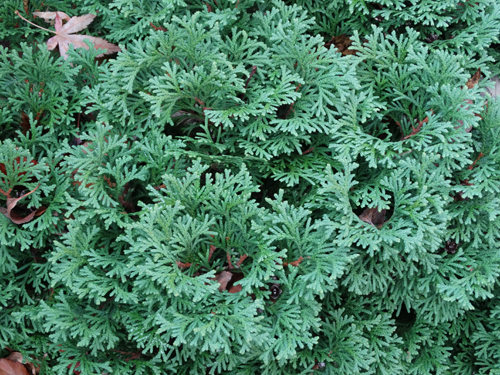
Agrotechnical features
The variety grows well both in sunny and semi-shady places. Finding the shrub in direct sunlight throughout the day is undesirable, as well as in full shade, which is fraught with tarnishing and loss of density for the needles. When choosing a place for an ephedra, keep in mind that strong, cold winds that dry out the soil negatively affect its decorative effect. Avoid placing dwarf thuja where there are snow piles in winter. Tiny tim is undemanding to the soil, but it is still better to plant it in fresh, moderately moist, nutritious and loose soil, if possible, in loam. You can make your own potting mix by mixing 2 parts garden soil, 1 part sand and the same amount of peat. There is another recipe: combine turf, peat and sand in a 2: 1: 1 ratio. Recommended soil pH range: 4.5-6. Among other things, add 50 grams of compound fertilizer to the prepared substrate. At the bottom of the hole, there must be a thick layer of gravel or fine gravel. After lowering the seedling into the hole and covering the roots with earth, pay attention to the root collar of the plant: it should be at the level of the soil. This is very important, since non-observance of this recommendation can lead to very disastrous consequences: at best, a slowdown in growth and a violation of the development of thuja, at worst, an increase in the risk of rotting of the lower part of the shrub and even the death of the plant.
Culture care is not difficult. The dwarf ephedra must be regularly watered with settled, cold water, fed annually with complex fertilizer (in spring and summer). Know that this plant tolerates temporary waterlogging of the soil, but does not tolerate the drying out of an earthen coma.However, with age, the culture becomes more and more drought-resistant. You should also periodically remove weeds near Tini Tim, shallowly loosen and mulch the area of the trunk circle with tree bark or peat. For the crown, it is advisable to carry out sprinkling, especially in hot dry weather. This procedure is shown in the spring for a uniform awakening of the culture.
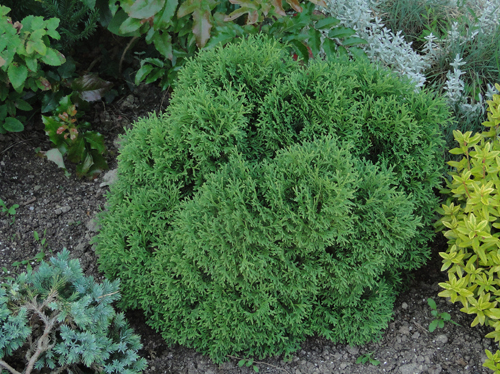
Every year, with the onset of spring, pruning of dry and frozen shoots of a coniferous plant is carried out. An evergreen crop is sheared when the need arises - for example, when growing a shrub in a hedge. The same goes for formative pruning. For better wintering in the fall, the thuja is covered with burlap, wrapping the material around the green beauty. In an adult culture, it is advisable to pre-tie the branches of the crown with twine in order to avoid deformation with snow. The shelter of the ephedra for the winter is needed not so much to protect it from the cold, but to prevent the occurrence of sunburn and, as a consequence, the deterioration of the decorative effect of the variety.
Thuja aphids can attack the plant from pests. The fight against it is carried out by treating the shoots with an insecticidal preparation. For the prevention of fungal diseases, the culture should be sprayed with a fungicidal solution several times during the spring-summer period.
Use cases
Tini Tim is ideal for single and group plantings. At the same time, it is recommended to place it on a lush green grassy lawn - in this case, a dwarf spherical thuja will look especially impressive. Coniferous crops are ideal for placement on the sides of garden paths, along the perimeter of the site and the lawn already mentioned above. There will be a place for her and on a flower bed in a flower garden. The variety is included in the coniferous-shrub mixborder. A good option is to plant a dwarf conifer with a spherical crown along the banks of an artificial reservoir, which will provide high air humidity around the plant. This shrub is appropriate near garden stairs and gazebos: both as an independent culture and as part of mixed compositions, which may include roses or peonies. It is able to become an original element of a heather or Japanese garden, rockery. By placing shrubs of this variety close to each other, it is easy to form a hedge.
The culture does not conflict with other conifers and goes well with deciduous plants. It tolerates air polluted by exhaust gases well, so ephedra can be safely planted near gas stations. Landscape designers use an evergreen plant for landscaping the territories of medical, educational and municipal institutions, because this variety, like many varieties of thuja, purifies the atmosphere, saturating the air with medicinal phytoncides. It is also grown in containers that decorate the veranda, terrace, balcony.
